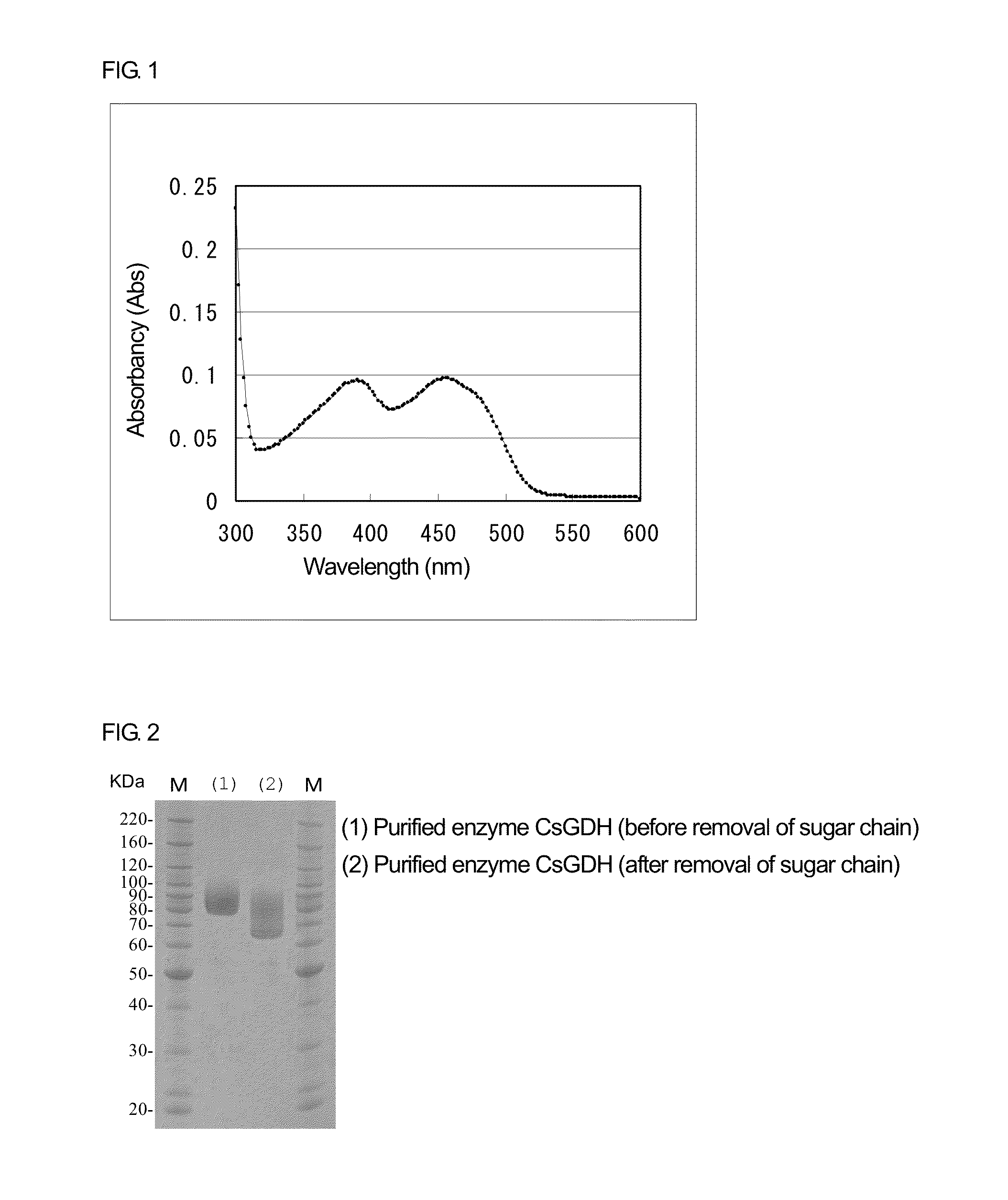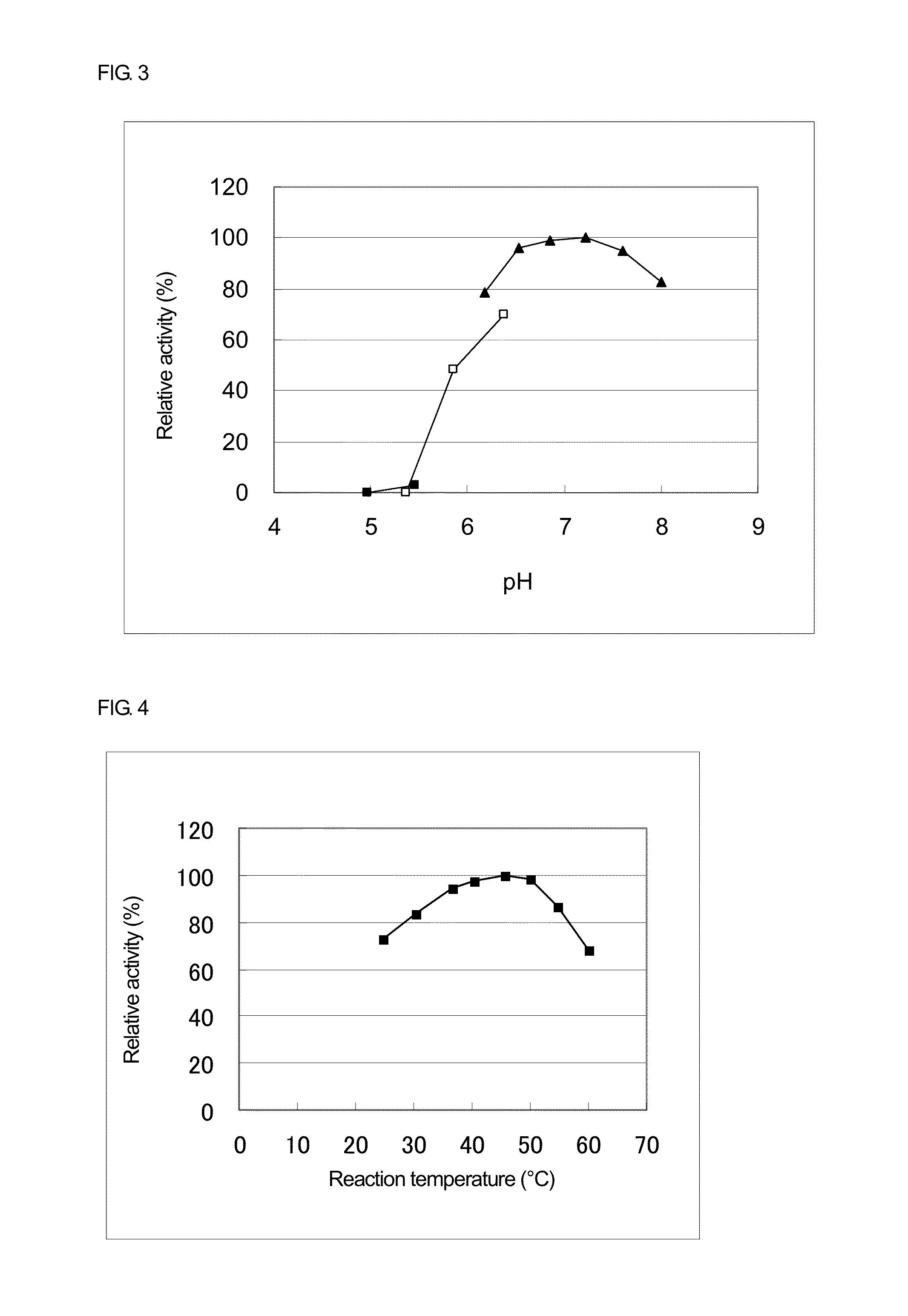Novel glucose dehydrogenase
a glucose dehydrogenase and glucose technology, applied in the field of glucose dehydrogenase, can solve the problems of affecting the measurement accuracy of blood glucose levels, dissolved oxygen in a measurement sample is likely to affect the measurement, etc., and achieves excellent thermal stability, reduced reactivity to maltose, and accurate measurement of glucose concentration.
- Summary
- Abstract
- Description
- Claims
- Application Information
AI Technical Summary
Benefits of technology
Problems solved by technology
Method used
Image
Examples
example 1
Reconstitution of Strain
[0160]Strains that belong to the genus Colletotricum were obtained from the international cooperation department of the National Institute of Technology and Evaluation (NITE) Biological Resource Center. The strains were reconstituted by being statically cultured at 25° C. for 3 to 7 days. DP medium (dextrin 2.0%, polypeptone 1.0%, KH2PO4 1.0%, agarose 1.5%) was used as reconstitution medium.
example 2
[0161]A loopful of each strain of the genus Colletotricum reconstituted in Example 1 was inoculated in a solid medium containing 2 g of wheat germ and 2 mL of 2% glucose solution sterilized in an autoclave at 120° C. for 20 minutes, and was statically cultured at 25° C. for about 5 to 7 days. After the culture, 1 mL of 50 mM potassium phosphate buffer solution (pH of 6.5) was added, and the cells were sufficiently suspended by vortex mixing. After a small amount of glass beads were added to the suspension, the cells were disrupted using a beads shocker (Yasui Kikai Corporation) at 3,000 rpm for 3 minutes, twice, followed by centrifugation for 5 minutes at 4° C., 2,000×g. The resulting supernatant was used as a crude enzyme solution.
example 3
Confirmation of Glucose Dehydrogenase Activity
[0162]The activity of glucose dehydrogenase in the crude enzyme solution obtained in Example 2 was measured according to the glucose dehydrogenase measurement method shown in Section 1-1 above. Table 1 shows the results.
TABLE 1StrainActivity (U / ml)Colletotrichum0.38(RD056779)
[0163]As shown in Table 1, GDH activity was confirmed in the crude enzyme solution from Colletotrichum RD056779.
PUM
| Property | Measurement | Unit |
|---|---|---|
| Fraction | aaaaa | aaaaa |
| Fraction | aaaaa | aaaaa |
| Fraction | aaaaa | aaaaa |
Abstract
Description
Claims
Application Information
 Login to View More
Login to View More - R&D
- Intellectual Property
- Life Sciences
- Materials
- Tech Scout
- Unparalleled Data Quality
- Higher Quality Content
- 60% Fewer Hallucinations
Browse by: Latest US Patents, China's latest patents, Technical Efficacy Thesaurus, Application Domain, Technology Topic, Popular Technical Reports.
© 2025 PatSnap. All rights reserved.Legal|Privacy policy|Modern Slavery Act Transparency Statement|Sitemap|About US| Contact US: help@patsnap.com



